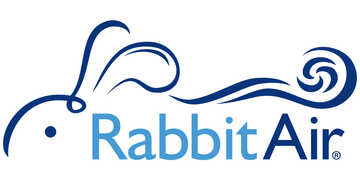What is a Negative Ion Generator?
A negative ion generator is a device designed to produce and release negative ions into the air, which are molecules that have gained extra electrons, resulting in a negative charge.
These generators are often used to improve indoor air quality by helping airborne particles, such as dust and allergens, clump together, making them heavier and causing them to settle out of the air.
This process can potentially reduce pollutants and enhance overall air freshness. Negative ion generators are commonly found in air purifiers and other household appliances aimed at creating a healthier living environment
How Does an Air Ionizer Work?
An air ionizer uses high voltage to electrically charge air molecules. This process generates negative ions, which are then released into the environment. These negative ions attach themselves to airborne particles like dust, pollen, smoke, and allergens. Once attached, the particles become heavier and either fall to the ground or are more easily captured by air filters. This mechanism helps to reduce the concentration of airborne contaminants, leading to cleaner indoor air.
Air ionizers can be standalone units or integrated into air purifiers. In devices like our MinusA2 air purifier, the ionizer works in tandem with multiple filtration stages to maximize air cleaning efficiency. The combination ensures that not only are particles removed from the air, but they are also trapped and not re-released into your living space.
Pros and Cons of Ionic Air Purifiers
Pros:
- Enhanced Air Quality: By emitting negative ions, ionic air purifiers effectively reduce airborne particles, contributing to a cleaner and healthier indoor environment.
- Low Maintenance: These devices often require less upkeep since they may not use traditional filters that need regular replacing.
Cons:
- Limited Effectiveness on Odors and Gases: Ionic purifiers are less effective at removing gaseous pollutants and odors compared to activated carbon filters. That’s why they are best paired with activated carbon filtration systems.
- Particle Settlement: While negative ions cause particles to settle out of the air, these particles may accumulate on surfaces, requiring more frequent cleaning. This isn’t the case when using a capable air purifying system, though.
What are Negative Ions?
One of the wonderful things about hiking through the forest or lounging at the beach is breathing in the clean, fresh air of nature. The air in these places not only smells great, but breathing it can make us feel energized and excited. What gives the air in natural places such good mojo? Negative ions! Also called anions, these are molecules that have become negatively charged due to strong natural forces such as sunlight, wind, or churning water. There is evidence that breathing air abundant with negative ions positively affects our mood and health. Doctors and scientists, who are studying the effects of negative ions, say that they can promote alertness and positive feelings in some people, and may help to increase oxygen to the brain. Research is ongoing to learn how to harness the use of negative ions to affect health positively.
While negative ions are plentiful in natural places, they are far less common indoors. Many air purifiers, such as our MinusA2, now come equipped with a negative ion generator in order to infuse our indoor air with these negatively charged molecules. In addition to the possible health benefits, negative ion generators pair well with air purifiers because they can help to increase filtering efficiency. Negative ions are attracted to particles in the air, weighing them down and causing them to sink. You may have experienced this cleaning power yourself after a rainstorm – the negative ions generated by the storm help to clean particle pollution out of the air. When used in the home, negative ions are attracted to the particles of indoor air pollution, weighing them down and making it easier for them to be captured by your air purifier’s filters.
Negative Ions Versus Ozone
While both negative ions and ozone can be generated by air purification devices, they are fundamentally different substances with different effects on health.
Negative Ions: These are oxygen atoms that have gained an extra electron, giving them a negative charge. Negative ions are generally considered safe and are associated with various health benefits, such as improved mood and air quality.
Ozone: Ozone is a molecule composed of three oxygen atoms. At ground level, high concentrations of ozone are harmful to human health, potentially causing respiratory issues and other health problems. Some air purifiers, particularly certain types of ionizers, can produce ozone as a byproduct.
When selecting an air purifier or ionizer, it's crucial to ensure that it does not produce harmful levels of ozone. Devices like the MinusA2 are designed to enhance air quality without generating unsafe ozone levels, combining the benefits of negative ions with advanced filtration technologies.
Why Should You Consider Negative Ion Generators in Your Home
Negative ion generators offer a unique way to improve indoor air quality by replicating the natural air-refreshing processes found in forests and near waterfalls. By releasing negative ions, these devices can reduce airborne pollutants and potentially contribute to better health and well-being. When used alongside high-quality air purifiers, negative ion generators can significantly enhance the effectiveness of air cleaning systems in your home.




